Electric vehicle charging has come a long way. Today, drivers can plug in almost anywhere—at home, at the office, in parking lots, or along highways. The growing network of EV charging stations is making it easier than ever to travel without worrying about running out of power.
But here’s the real question: what’s the difference between Level 2 charging and DC fast charging? And when should you use one over the other?
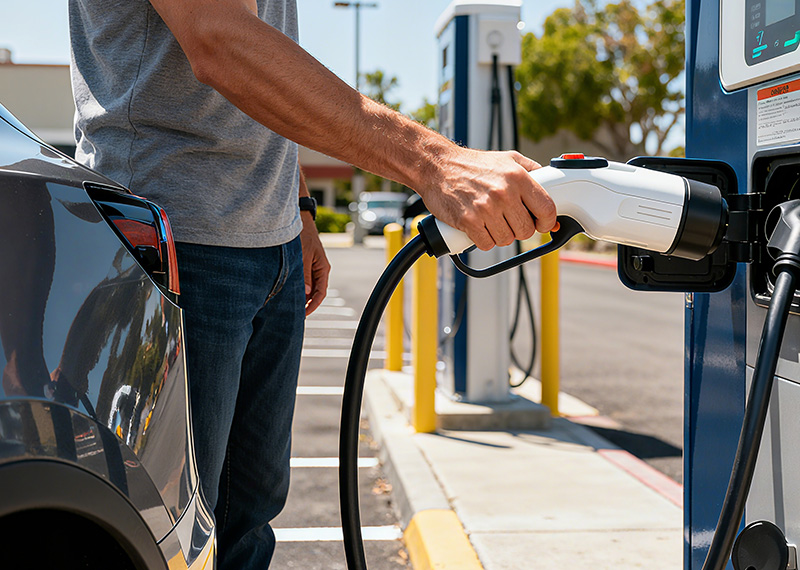
It all comes down to how electricity flows from the grid into your car’s battery.
AC vs DC Charging: The Core Difference
The power grid supplies AC (alternating current). EV batteries store DC (direct current). That means electricity needs to be converted before it can charge your car. Where that conversion happens defines the charging type.
- Level 2 charging: The charging station provides AC power. Your car’s onboard charger (OBC) converts it to DC before it goes into the battery.
- DC fast charging: The conversion happens inside the charger itself. It feeds DC power straight into the battery, bypassing the onboard charger entirely.
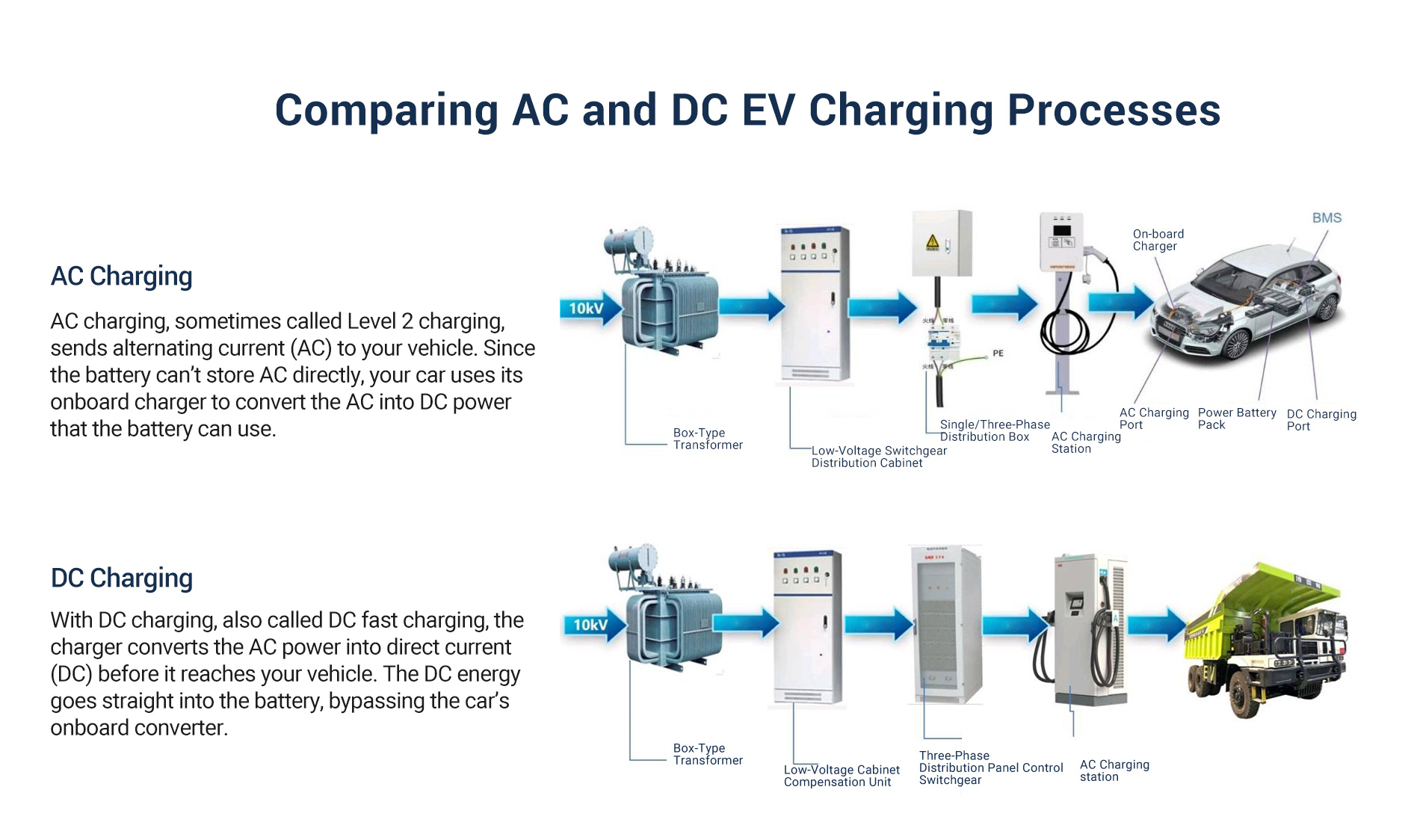
That’s why DC fast charging is much faster. It’s like tapping directly into the power supply instead of waiting on your car’s built-in system to do the work.
Level 1 Charging: Slow but Simple
Some drivers still rely on Level 1 charging. It uses a standard 120-volt household outlet and a simple cable. No extra equipment. No installation. Just plug it in.
Charging time depends on the battery size and how much power is left. A small EV with about 100 miles of range can take close to 24 hours to fully charge from empty.
Even though it’s slow, Level 1 charging has its place:
- Great for plug-in hybrids or short daily commutes.
- Works well as a backup when no other charger is available.
- Easy to use—just plug and go.
But for larger EV batteries, Level 1 charging isn’t practical for everyday use.
When to Choose Level 2 Charging
Level 2 charging uses a 240-volt power source and delivers between 3 kW and 19.2 kW. That usually adds 25–60 miles of range per hour, depending on the car.
You’ll find AC charging stations in homes, offices, parking garages, and shopping centers. For most EV drivers, Level 2 is the go-to option for daily charging.
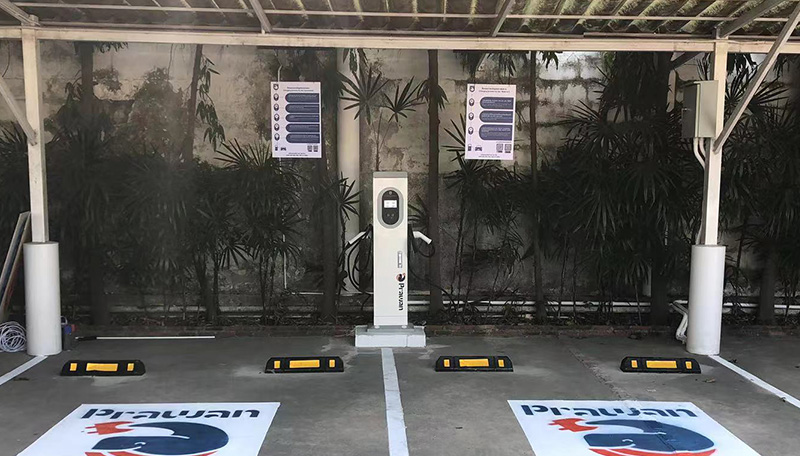
Best use cases:
- Charging while parked for hours: Perfect when your car sits overnight at home or during the workday. Plug in, and by the time you’re ready to leave, your battery is full.
- Topping off during short stops: A quick charge at a restaurant, mall, or gym can give you enough range to keep going.
Because it charges more gently, Level 2 is easier on your battery. It’s cost-effective, energy efficient, and ideal for regular use.
When to Choose DC Fast Charging
DC fast charging—also known as Level 3 charging—was built for speed. It can take your battery from 10% to 80% in 20–30 minutes.
These stations deliver between 30 kW and 480 kW of power. Popular connector types include CCS1, CHAdeMO (being phased out), and Tesla’s NACS, which is quickly becoming the new standard in North America.
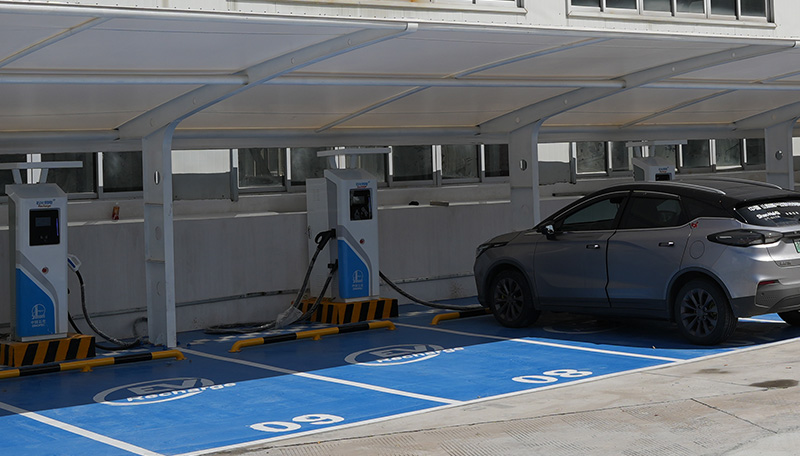
Where DC fast charging shines:
- Long road trips
Highway fast chargers let you stop for a quick break while your car adds hundreds of miles of range. - Emergency top-ups
When the battery is low and you’re in a hurry, a DC fast charger gets you back on the road fast. - Fleet and commercial use
Delivery vans, taxis, and shared cars need quick turnarounds. Fast charging keeps vehicles moving and businesses running.
Why Faster Isn’t Always Better
DC fast charging is convenient, but it comes with trade-offs.
- Higher cost
Fast chargers are expensive to build and maintain. The price per kWh is usually two to three times more than Level 2 charging—especially during peak hours. - Battery wear
High power levels generate more heat. Over time, frequent fast charging can increase battery degradation and reduce capacity. - Not every EV can use fast charging
Some plug-in hybrids and older models only support Level 2. Vehicles like the Prius Prime, Honda Clarity PHEV, or Chevy Volt use J1772 connectors and can’t plug into DC fast chargers.
For everyday driving, Level 2 charging is still the smarter, more sustainable option.
How DC Fast Charging Works
The secret behind DC fast charging is where the energy conversion happens.
With Level 2, the car’s onboard charger typically maxes out around 7.2–11 kW. That limits charging speed.
With DC fast charging, the conversion is handled inside the charger. It pushes high-voltage DC power directly into the battery—up to 350 kW for some stations. This allows faster, more controlled charging.
The charger also communicates with the vehicle, adjusting the power flow based on the battery’s state of charge to keep things safe and efficient.
A New Era of EV Charging Standards
North America’s charging landscape is changing fast. Tesla opened its NACS connector in 2022. Since then, major automakers like Ford, GM, BMW, Mercedes-Benz, Hyundai, Volvo, and Genesis have announced they’ll adopt it.
Why NACS is winning:
- Compact design
- Supports up to 1,200 amps
- Works with both AC and DC charging
- Officially adopted as SAE J3400
Starting in 2025, most new EVs in the U.S. will come with NACS compatibility, making charging simpler and more universal.
The Smart Way to Charge
Level 2 and DC fast charging aren’t competitors—they’re partners.
- Level 2 charging is your everyday workhorse. It’s reliable, cost-effective, and easy on your battery.
- DC fast charging is the power boost you need on the road or when time is tight.
- Level 1 charging is the backup plan when nothing else is available.
| Charging Type | Best Use | Frequency |
|---|---|---|
| Level 1 charging | Emergency, plug-in hybrids | Occasionally |
| Level 2 charging | Home, work, daily charging | Regular use |
| DC Fast Charging | Road trips, urgent needs, fleets | As needed |
As EV charging infrastructure expands, charging will keep getting faster, easier, and more affordable. For businesses, offering reliable, smart charging solutions is a powerful way to stay ahead in a growing market.
If you’re setting up charging for a residential community, commercial site, or fleet, we offer smart charging equipment that supports J1772, CCS1, and NACS standards. Compatible with most EVs, built for long-term performance.
📩 Contact us to get a product catalog or discuss your EV charging project.
[post_navigation]

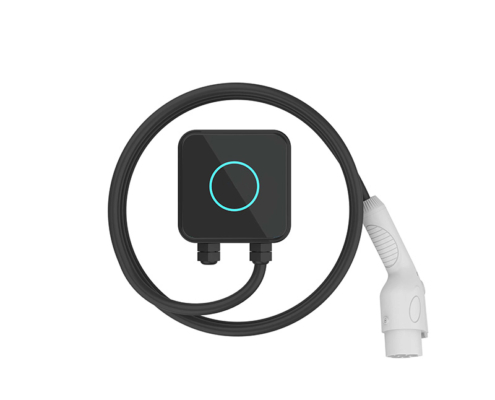
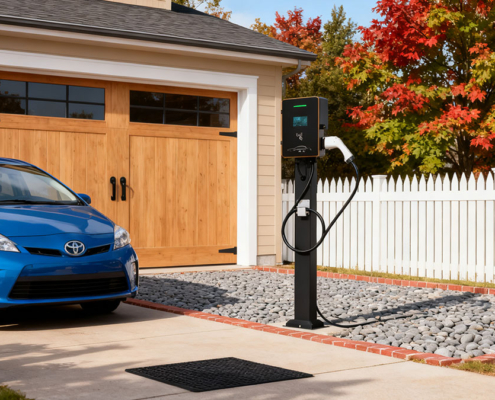




Leave a Reply
Want to join the discussion?Feel free to contribute!